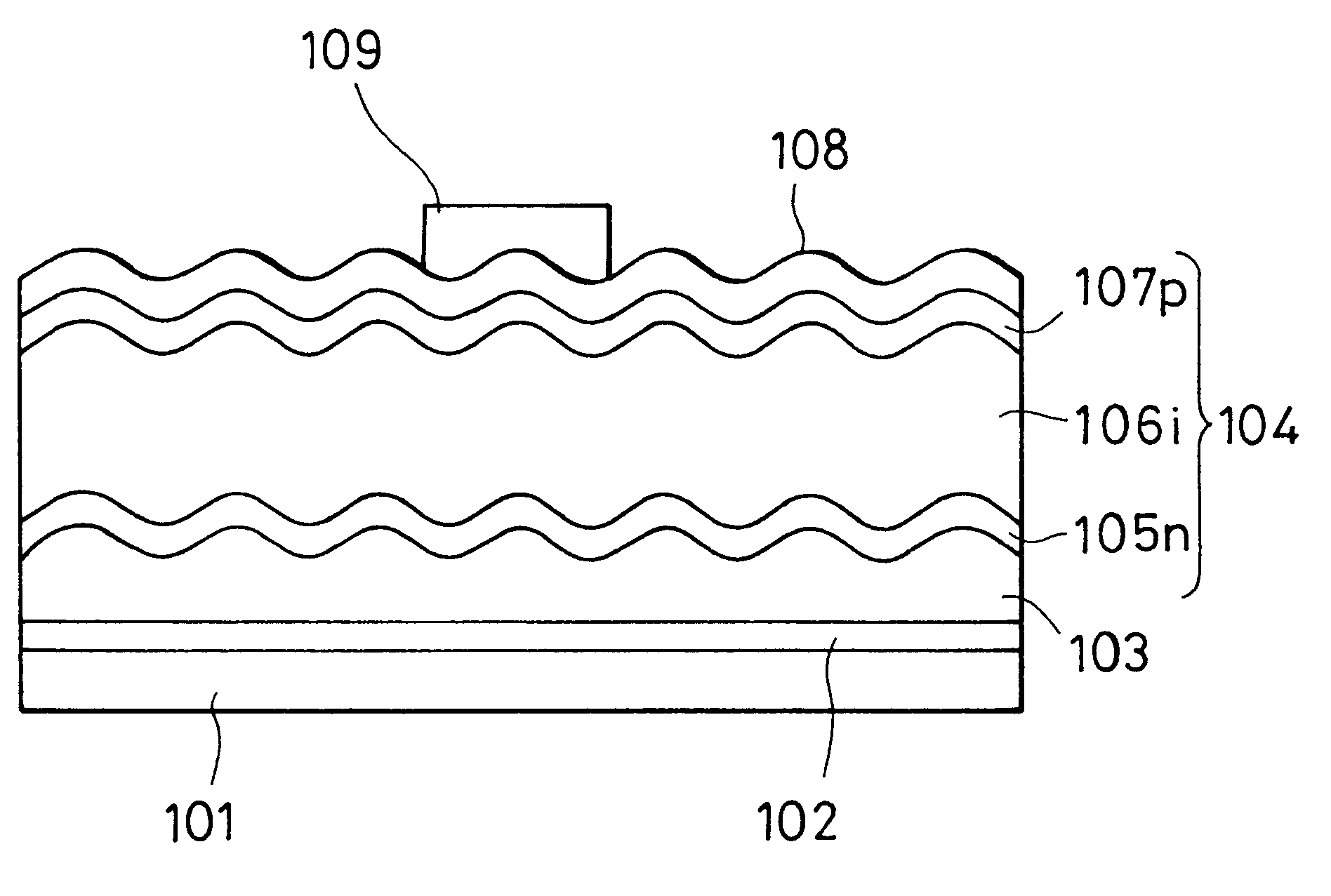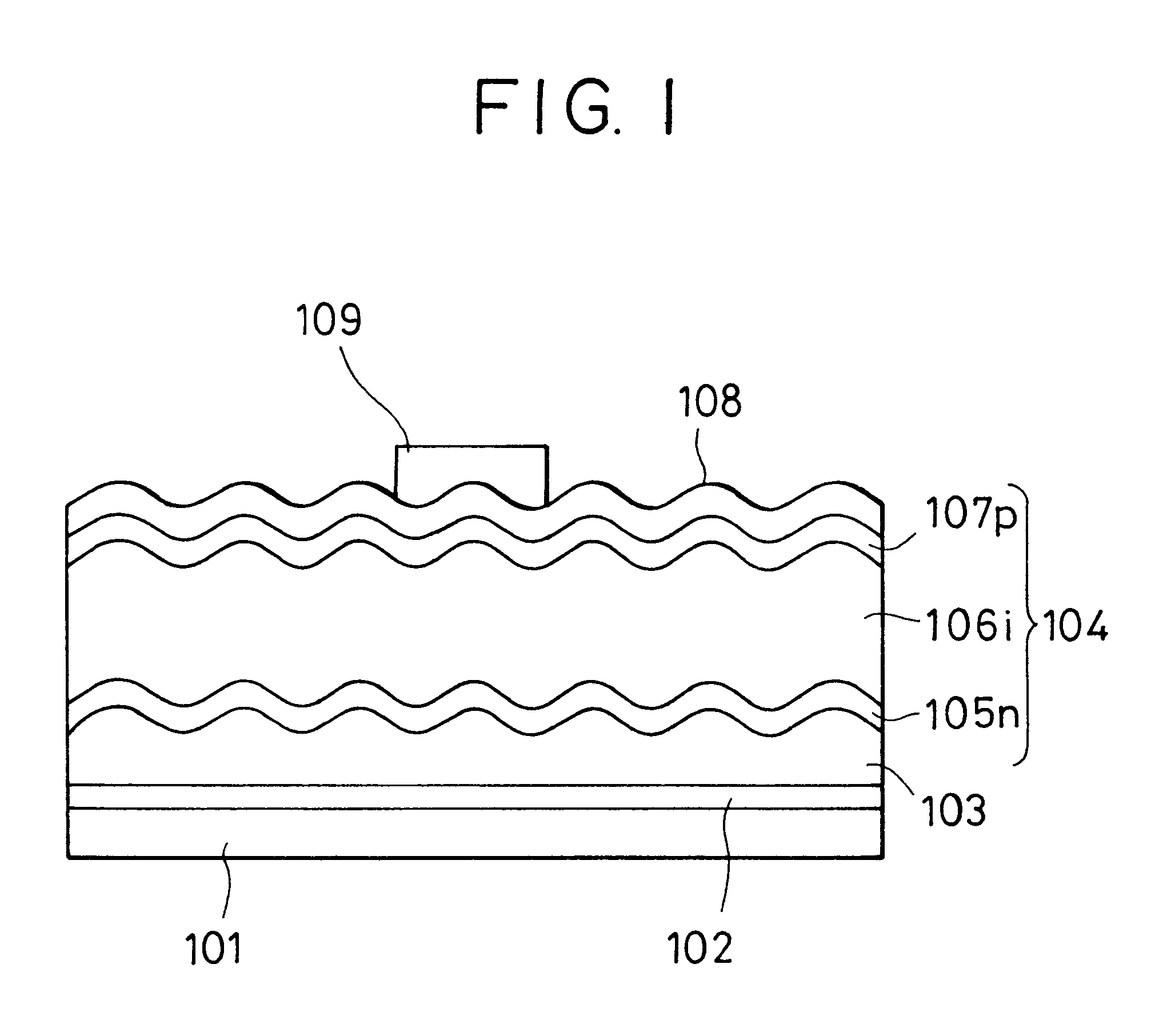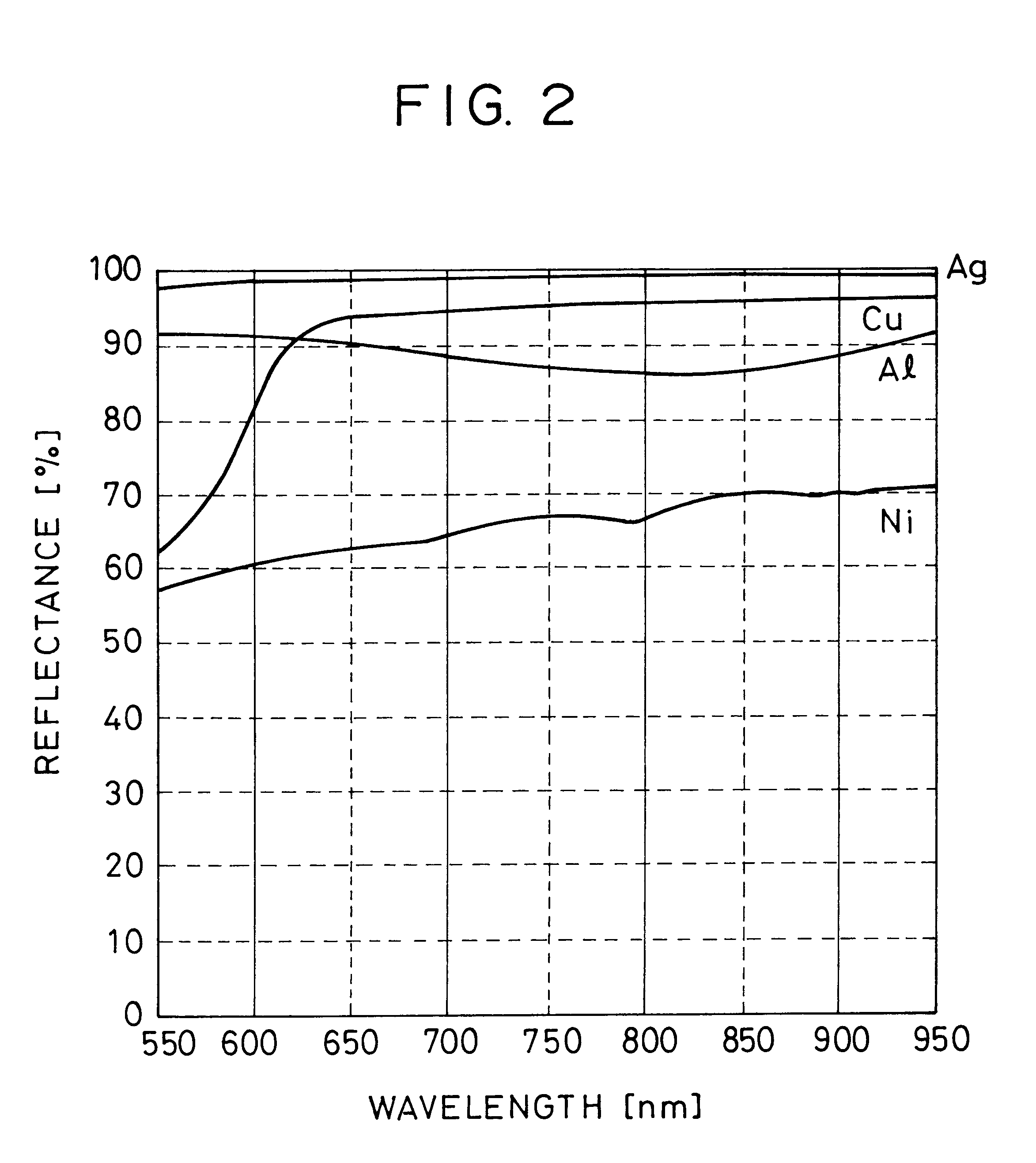Photovoltaic cell
- Summary
- Abstract
- Description
- Claims
- Application Information
AI Technical Summary
Benefits of technology
Problems solved by technology
Method used
Image
Examples
experiment 1
[ Addition of Titanium]
Samples 1a, 1b, 1c, 1d and 1e were prepared by depositing Al--Ti alloys containing 0.5, 2, 4, 5 and 6 atomic percent of Ti at a thickness of 7,500 .ANG. on a mirror-polished glass plate 7059 made by Corning Incorporated by DC magnetron sputtering. A Ti chip having a purity of 99.999% and a size of 5 mm by 5 mm by 1 mm was placed on the Al target so as to achieve the given compositions in Samples 1a through 1e. Sample 1f having a pure aluminum film was prepared using Al having a purity of 99.999% as a target in the same manner for comparison. Since these films were deposited at a rate of 40 .ANG. / sec at room temperature on a specular substrate, the surface of the deposited film was also specular. All the samples other than Sample 1f were analyzed with an energy dispersion x-ray micro analyzer (XMA) to determine their compositions.
Reflectance of these samples over a wavelength range from 400 to 1,200 nm was determined. Since Al has a local minimum reflectance at...
experiment 2
[ Addition of Magnesium]
Samples 2a, 2b, 2c, 2d and 2e were prepared by depositing Al--Mg alloys containing 0.5, 1, 3, 5 and 8 atomic percent of Mg at a thickness of 7,500 .ANG. on the mirror-polished glass plate set forth in Experiment 1 by the same process as in Experiment 1. Reflectance of these samples over a wavelength range from 400 to 1,200 nm was determined. Reflectance at 830 nm as a typical value is set forth in FIG. 8. FIG. 8 demonstrates that the reflectance of the Al--Mg film at 830 nm is improved by addition of 5 atomic percent or less of Mg as in the case of the addition of Ti. A diffraction pattern of Sample 2b has a strong (111) peak which is approximately 3.6 times that of the (200) peak and no (220) and (311) peaks, suggesting predominant orientation of the (111) plane.
experiment 3
[ Addition of Silver]
Samples 3a, 3b, 3c, 3d and 3e were prepared by depositing Al--Ag alloys containing 3, 8, 12, 20 and 28 atomic percent of Ag at a thickness of 7,500 .ANG. on the mirror-polished glass plate set forth in Experiment 1 by the same process as in Experiment 1. Sample 3f having a pure Ag film was also prepared for comparison. Reflectance of these samples over a wavelength range from 400 to 1,200 nm was determined. Reflectance at 830 nm as a typical value is set forth in FIG. 7. FIG. 7 demonstrates that the reflectance of the Al--Ag film at 830 nm is improved as in the case of the Al--Ti film and exhibits a maximum value at near 10 atomic percent of Ag. Preferably, the Ag content is 25 atomic percent or less. A diffraction pattern of Sample 3d containing 12 atomic percent of Ag has a unique (111) peak at the same angle 2.theta. as the (111) peak in Sample 1b, suggesting predominant orientation of the (111) plane.
PUM
 Login to View More
Login to View More Abstract
Description
Claims
Application Information
 Login to View More
Login to View More - R&D
- Intellectual Property
- Life Sciences
- Materials
- Tech Scout
- Unparalleled Data Quality
- Higher Quality Content
- 60% Fewer Hallucinations
Browse by: Latest US Patents, China's latest patents, Technical Efficacy Thesaurus, Application Domain, Technology Topic, Popular Technical Reports.
© 2025 PatSnap. All rights reserved.Legal|Privacy policy|Modern Slavery Act Transparency Statement|Sitemap|About US| Contact US: help@patsnap.com



